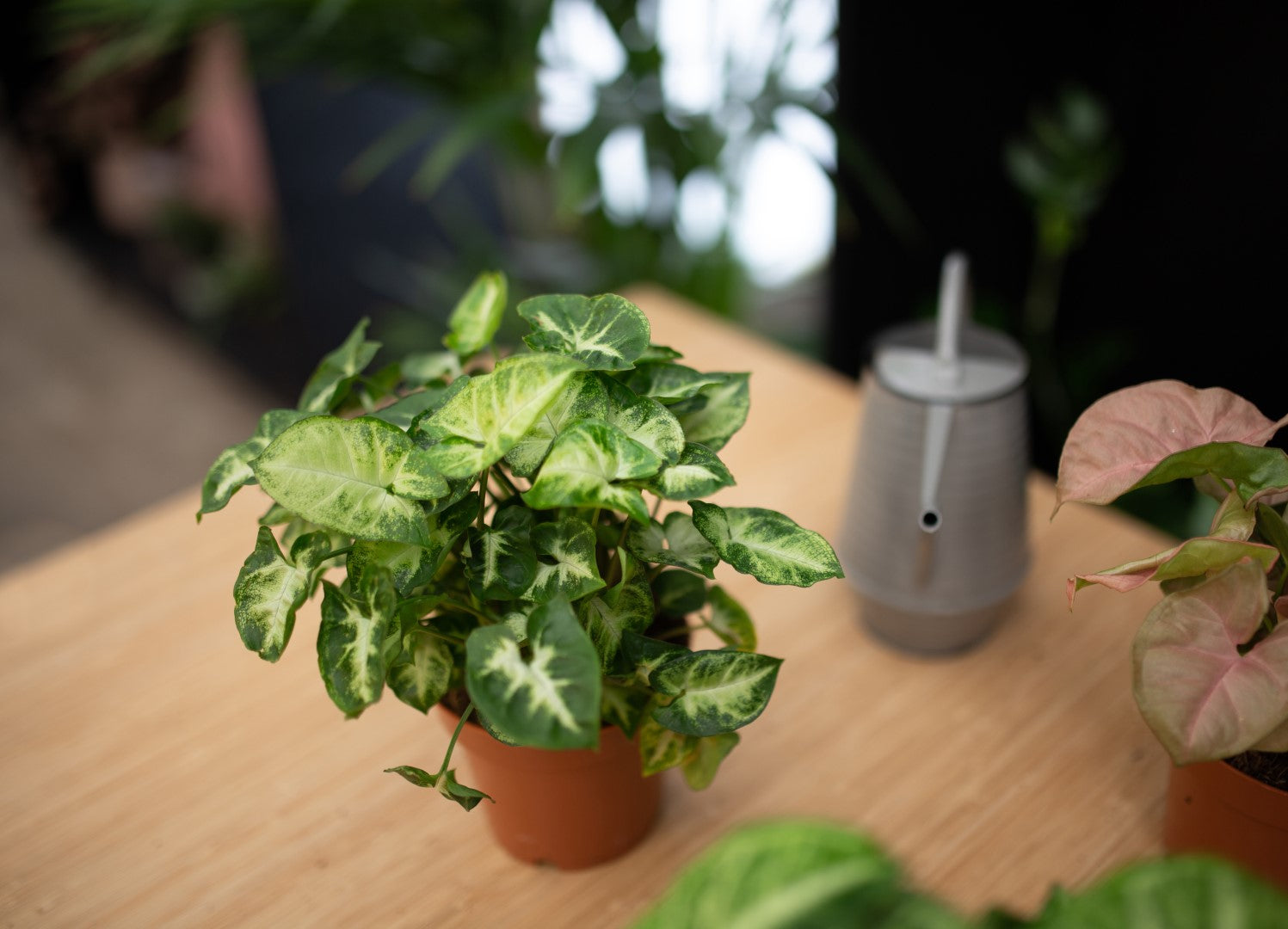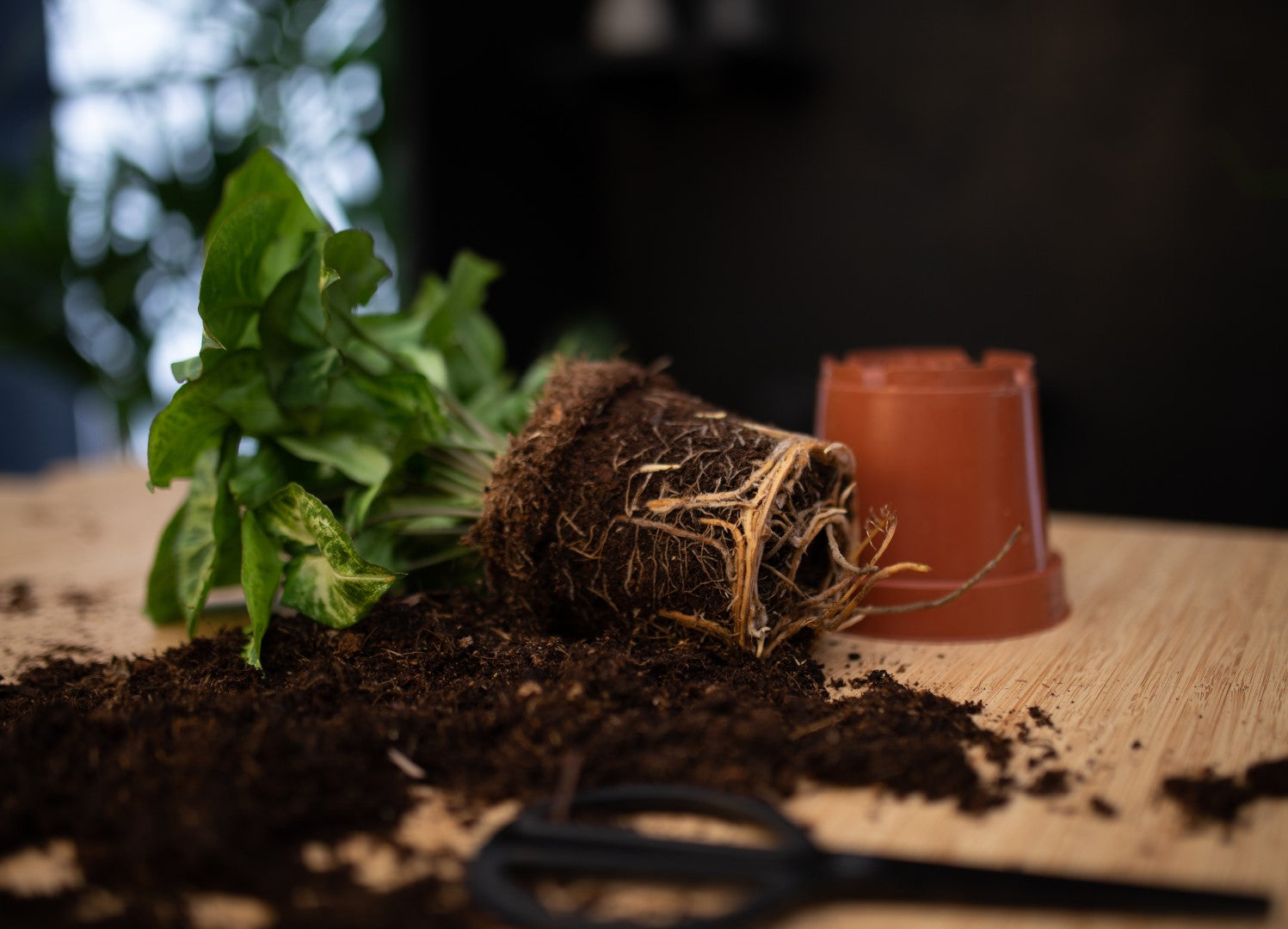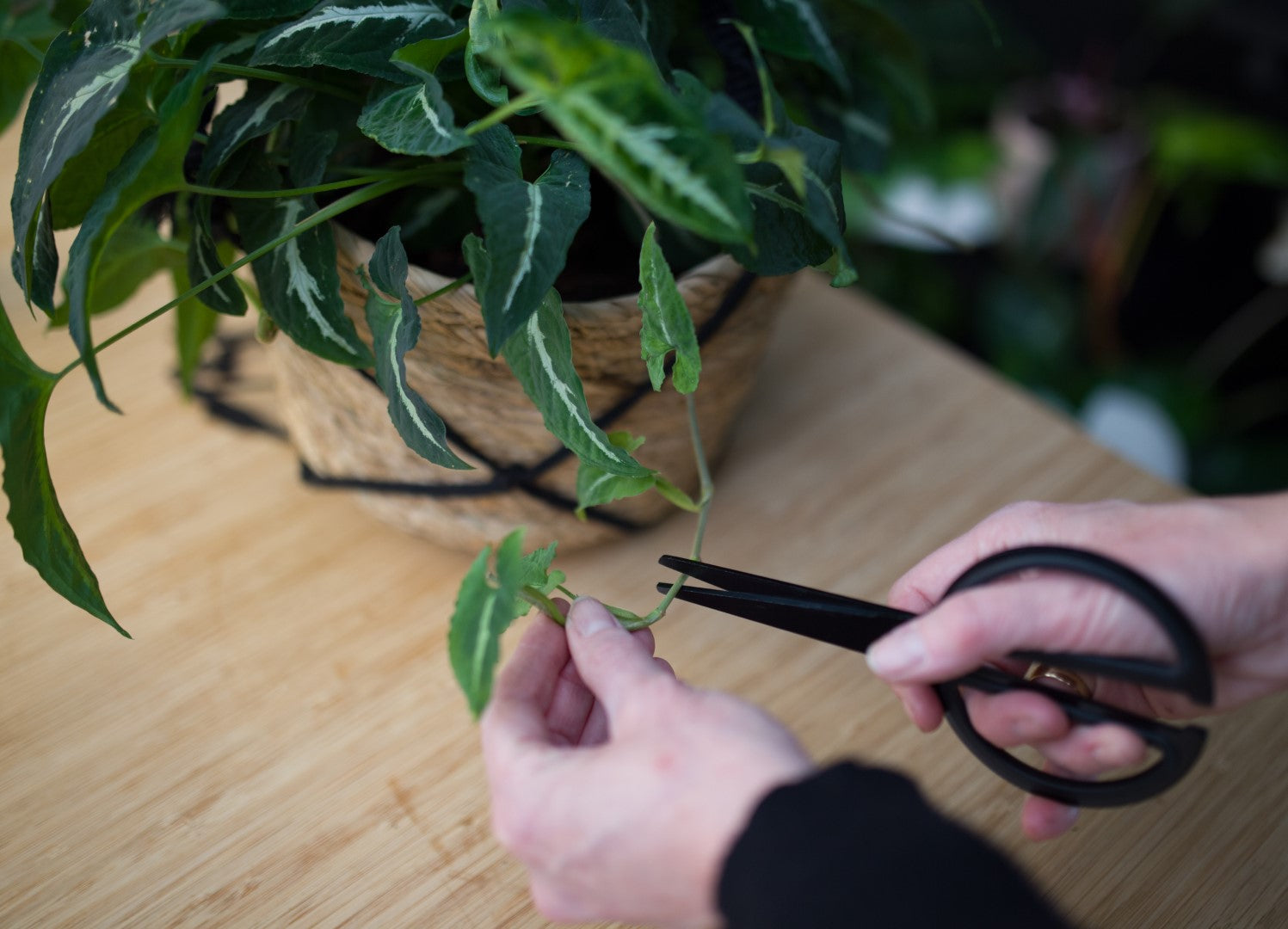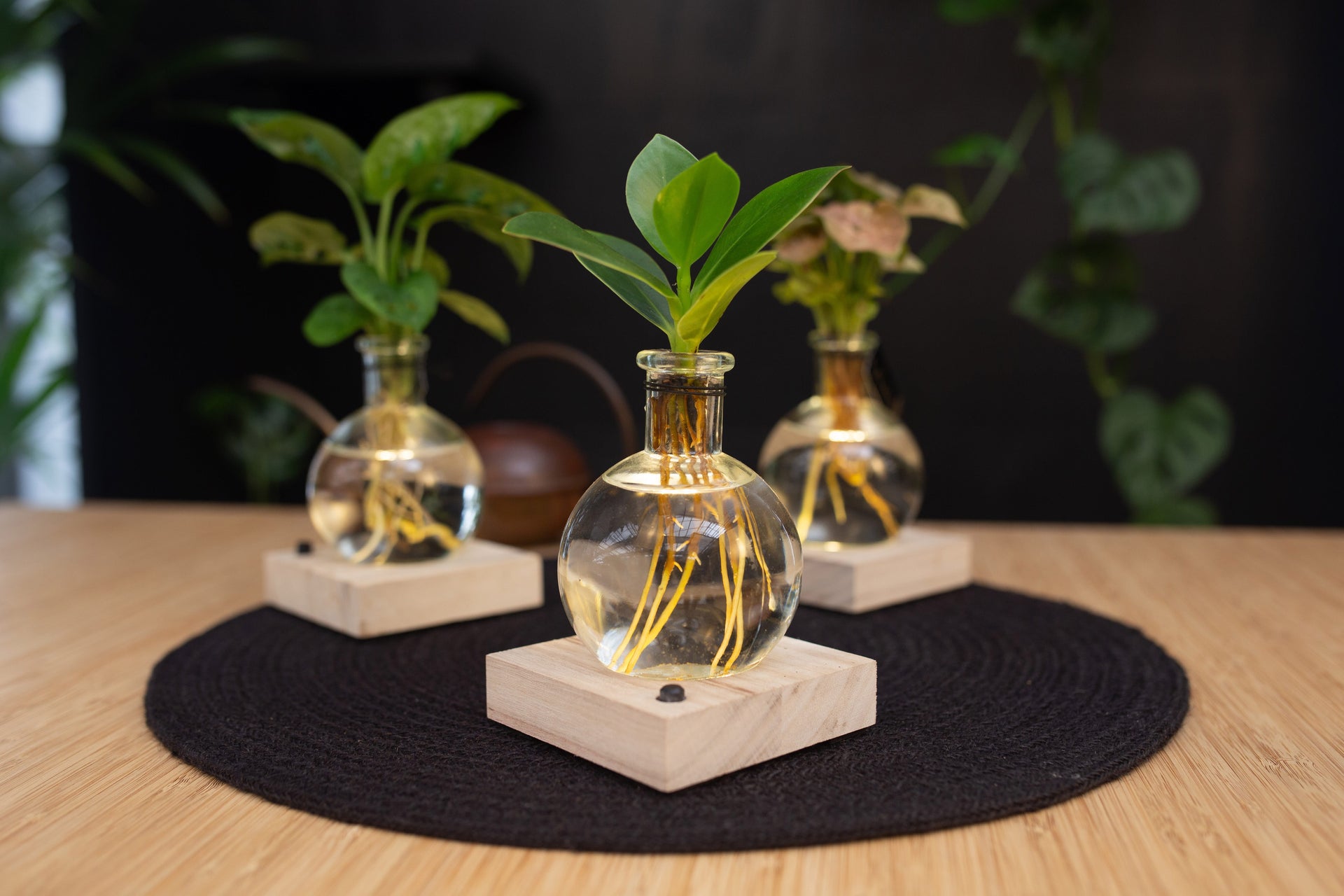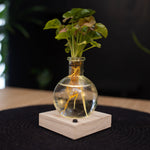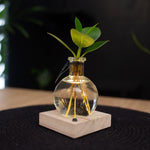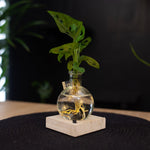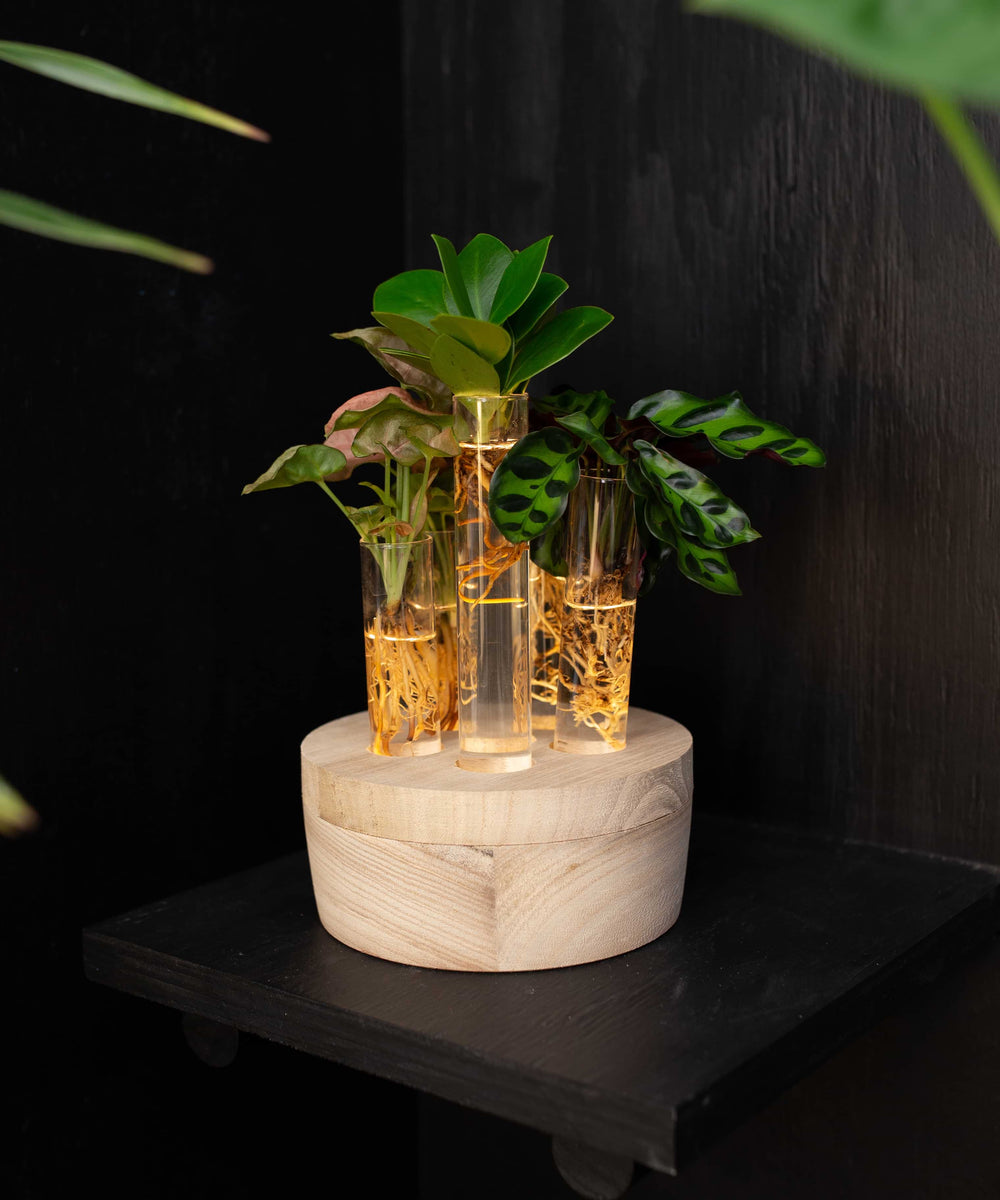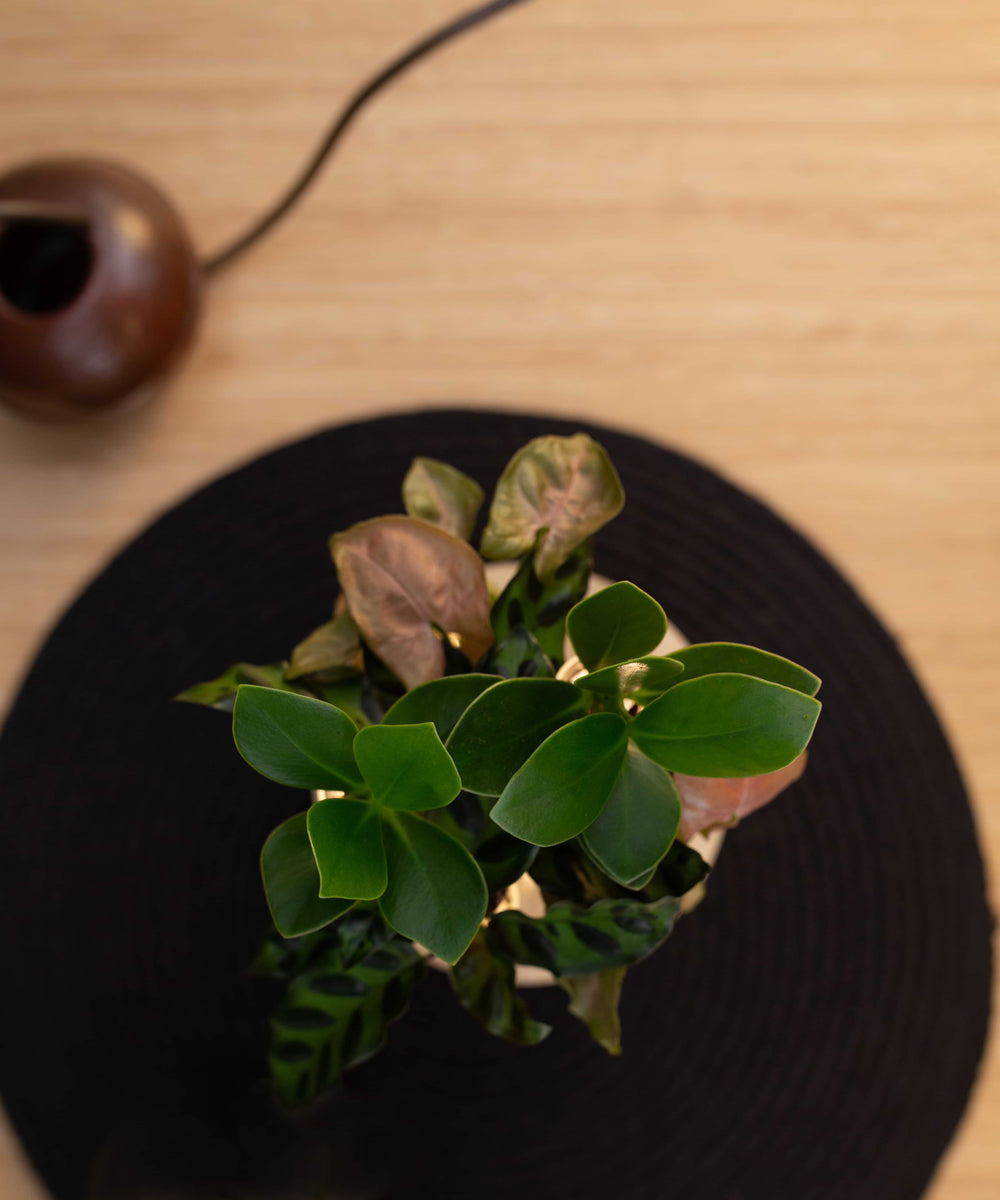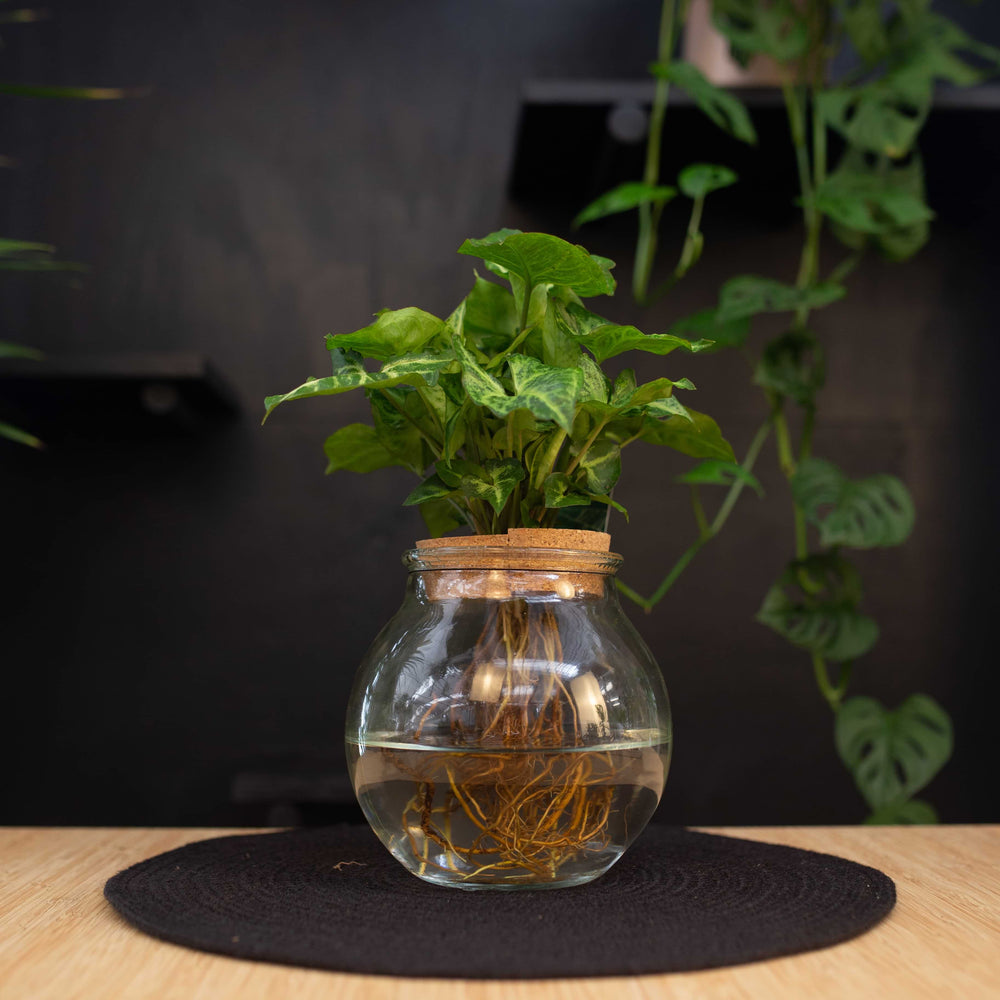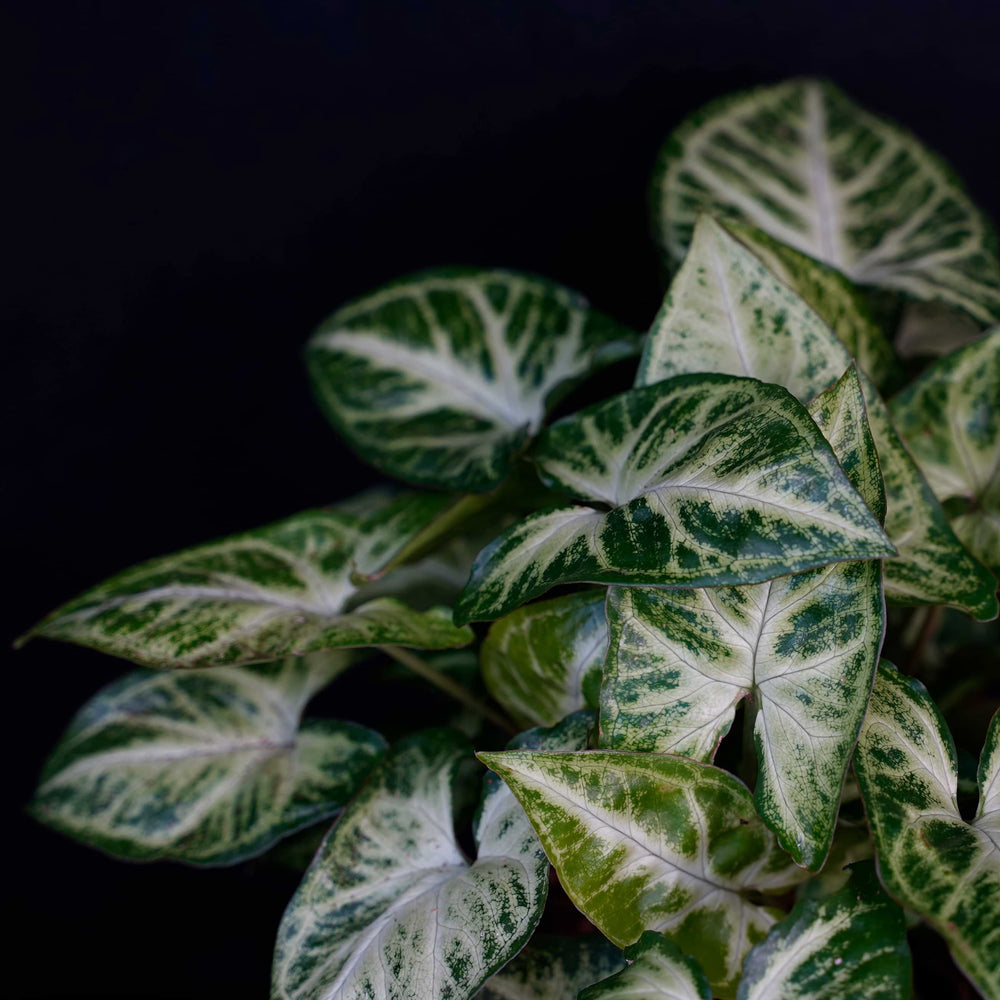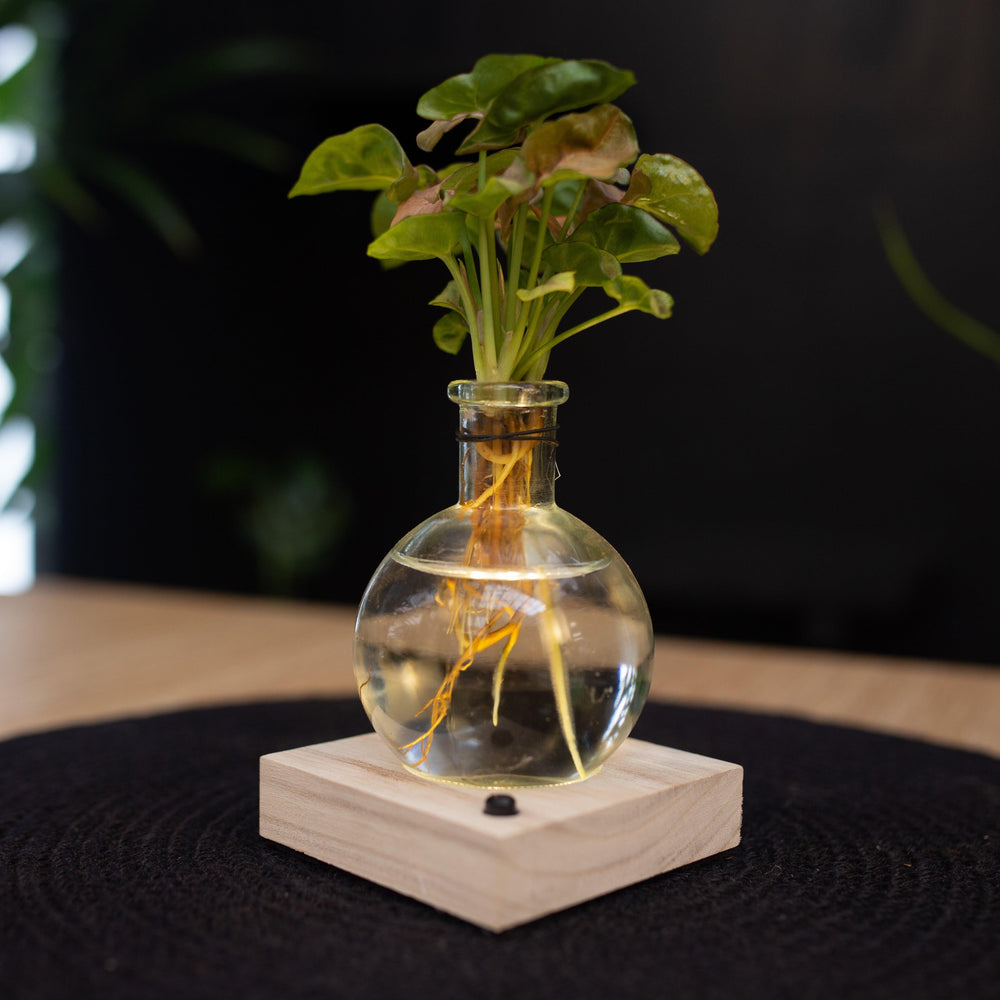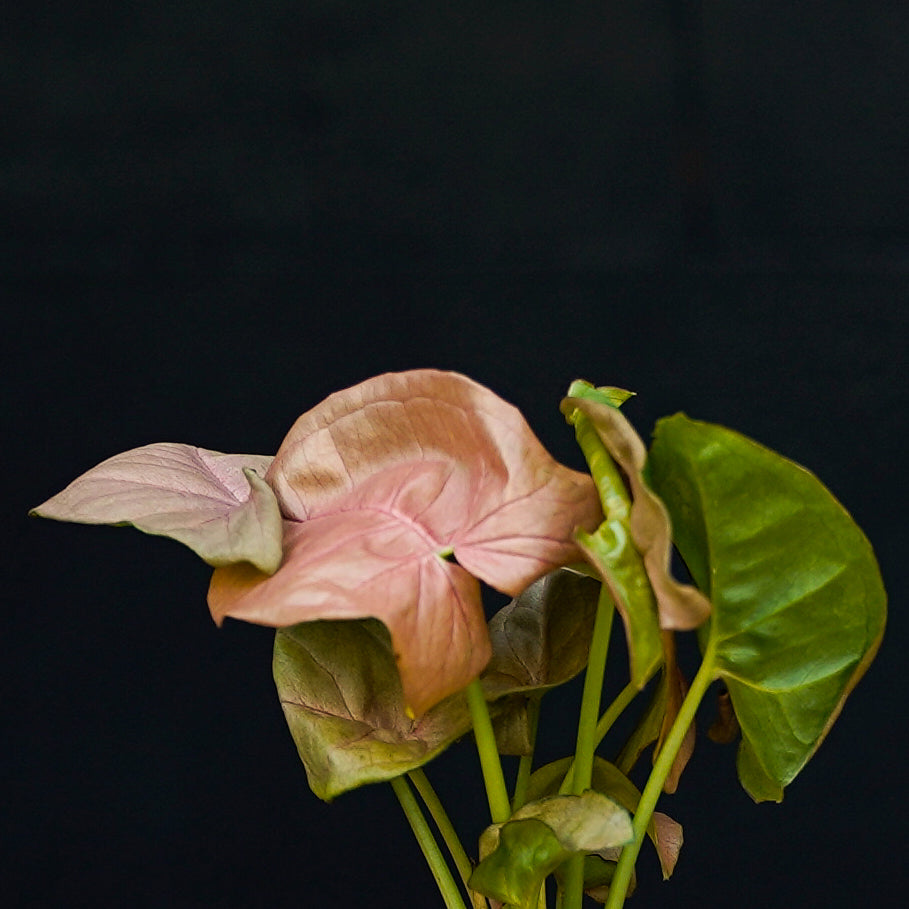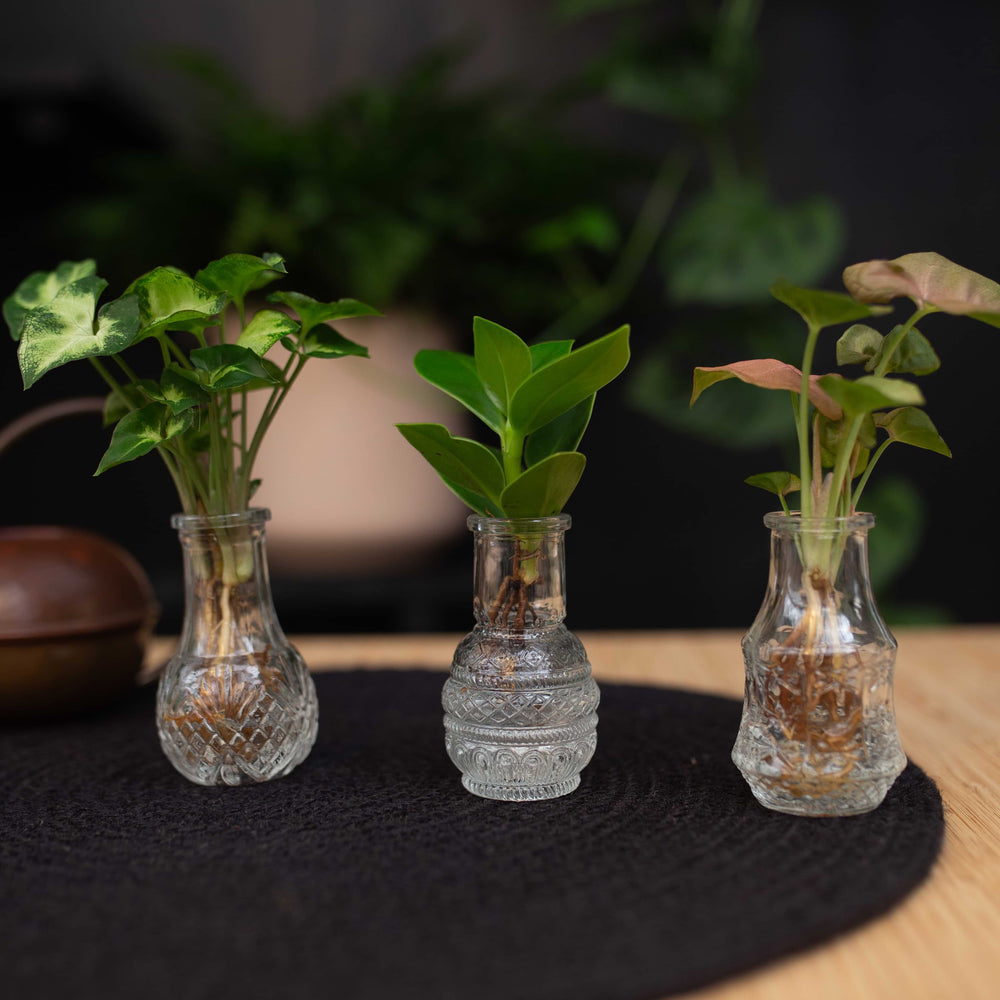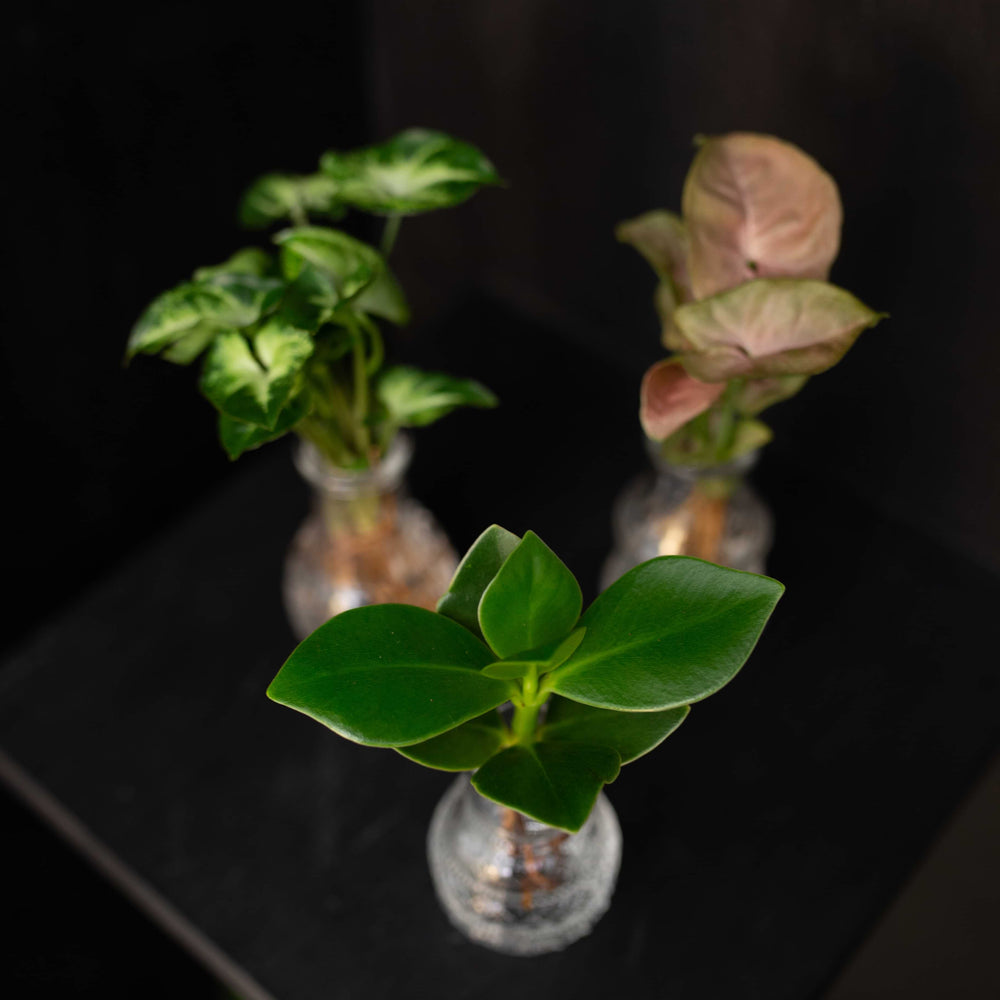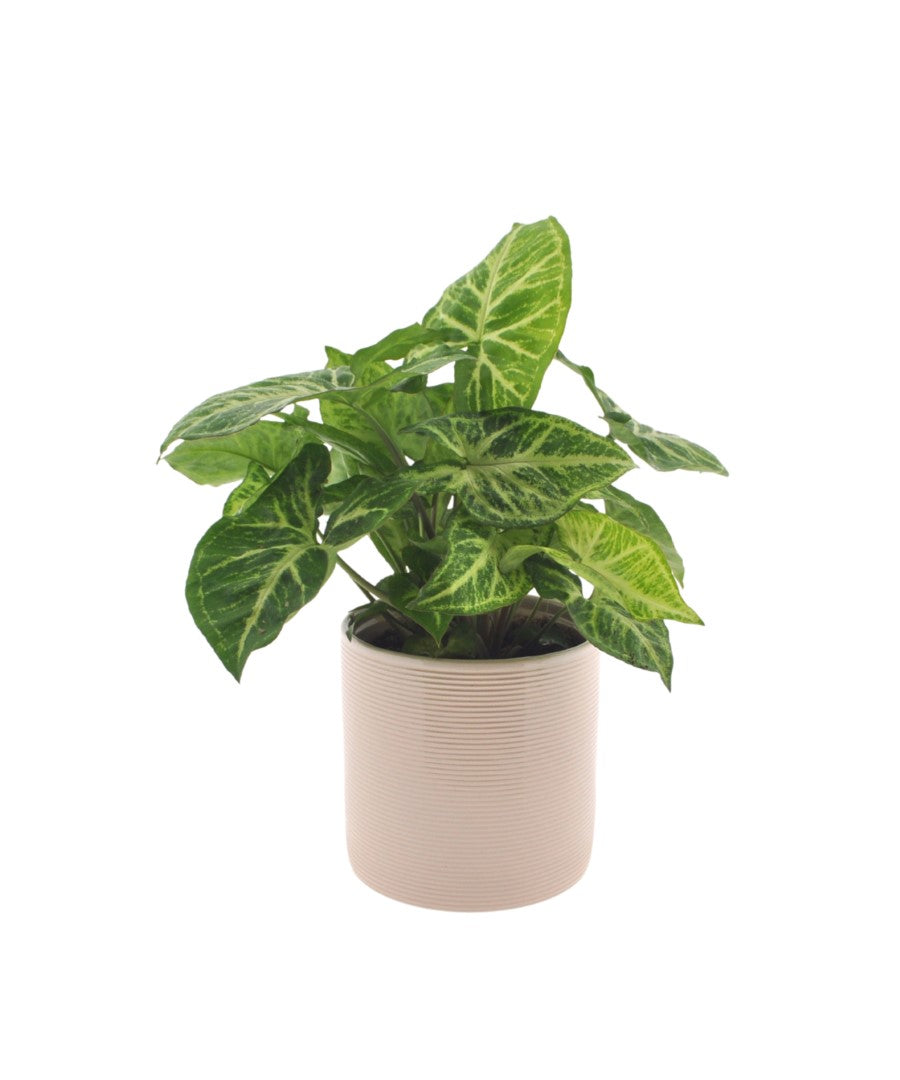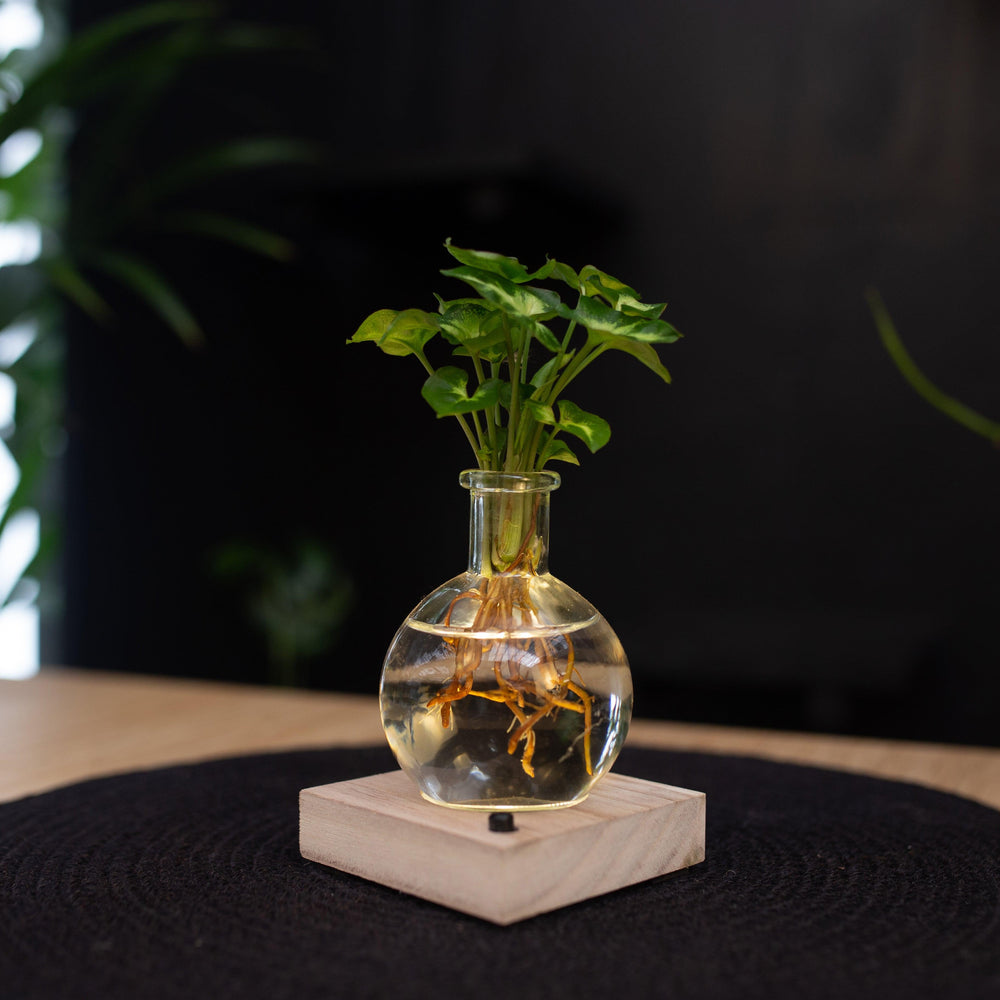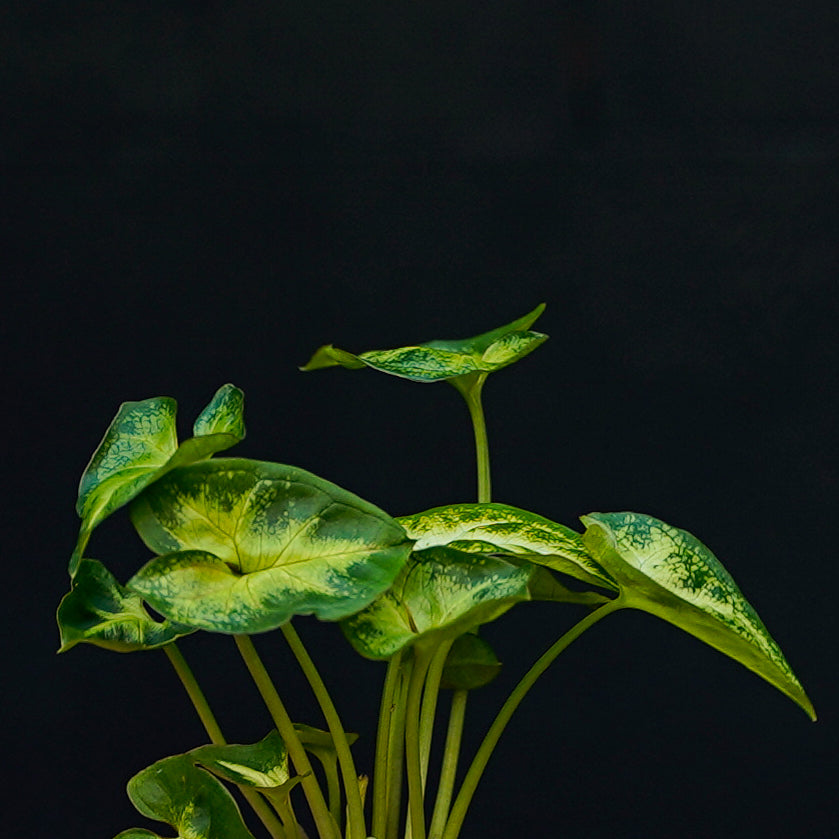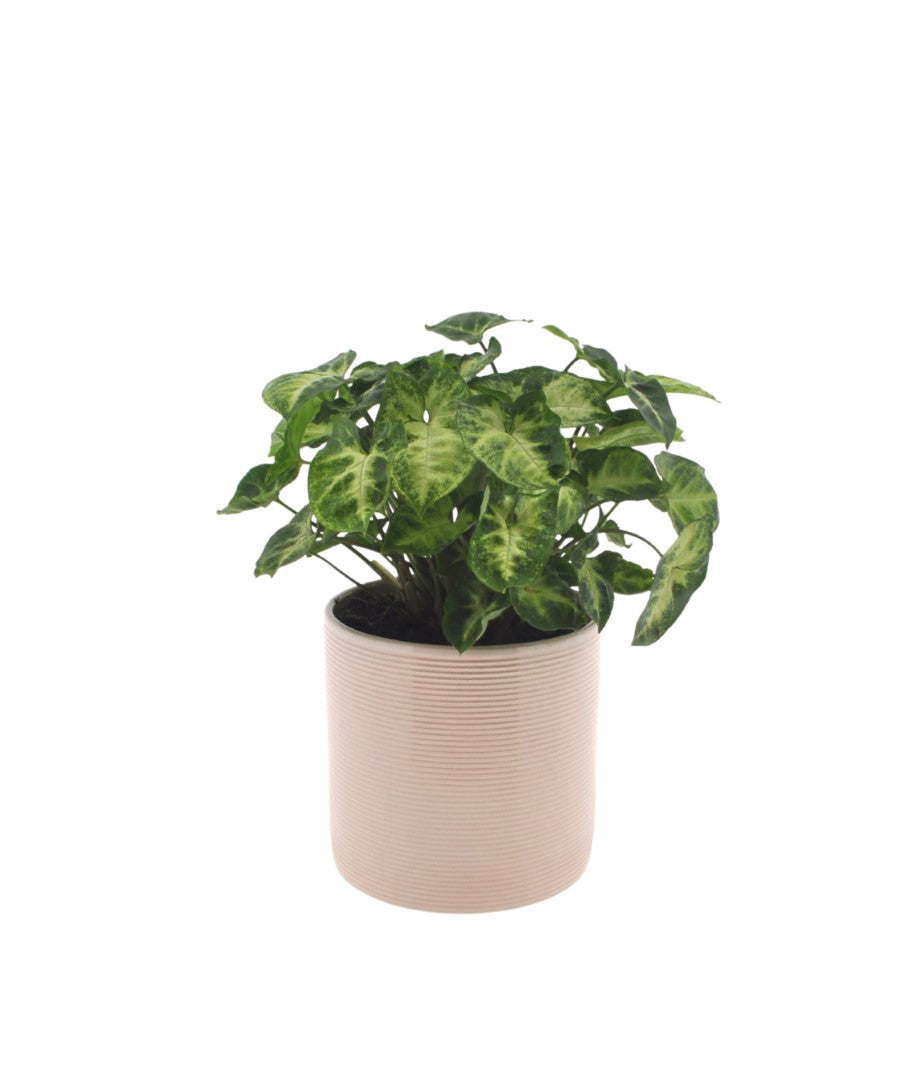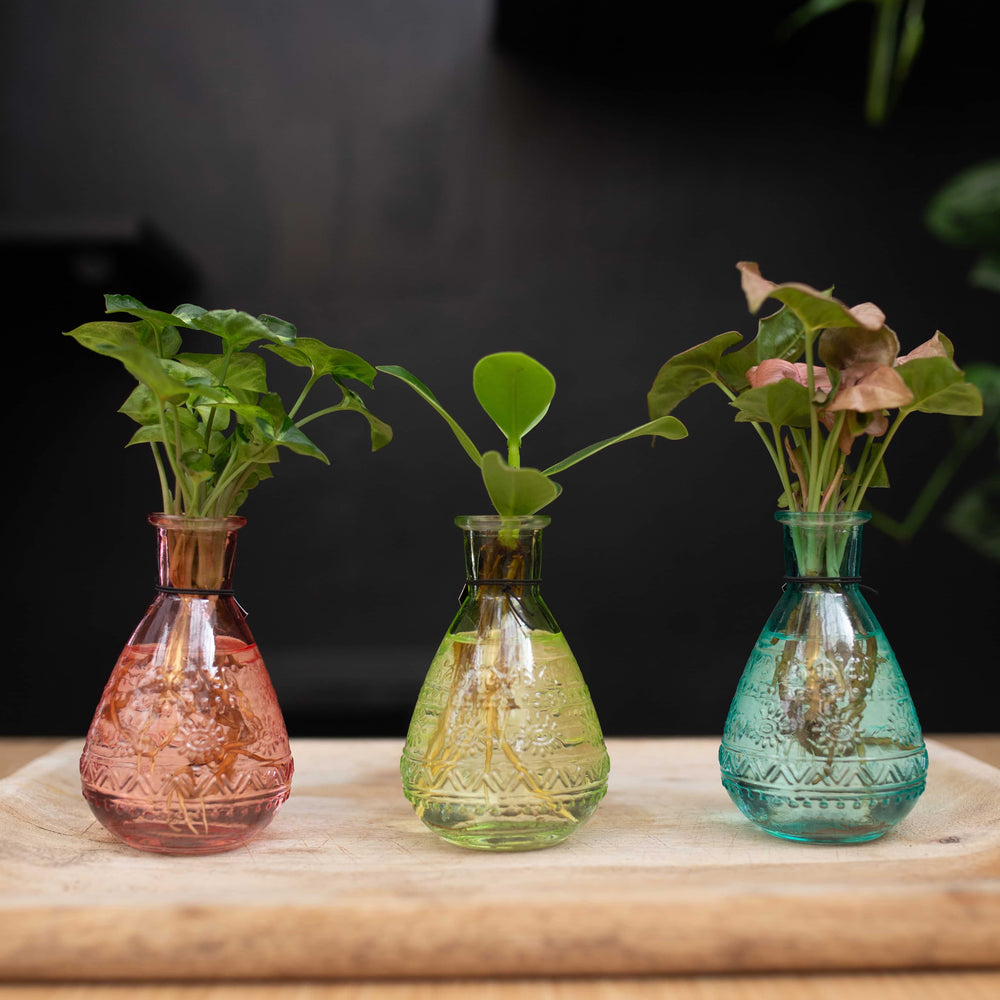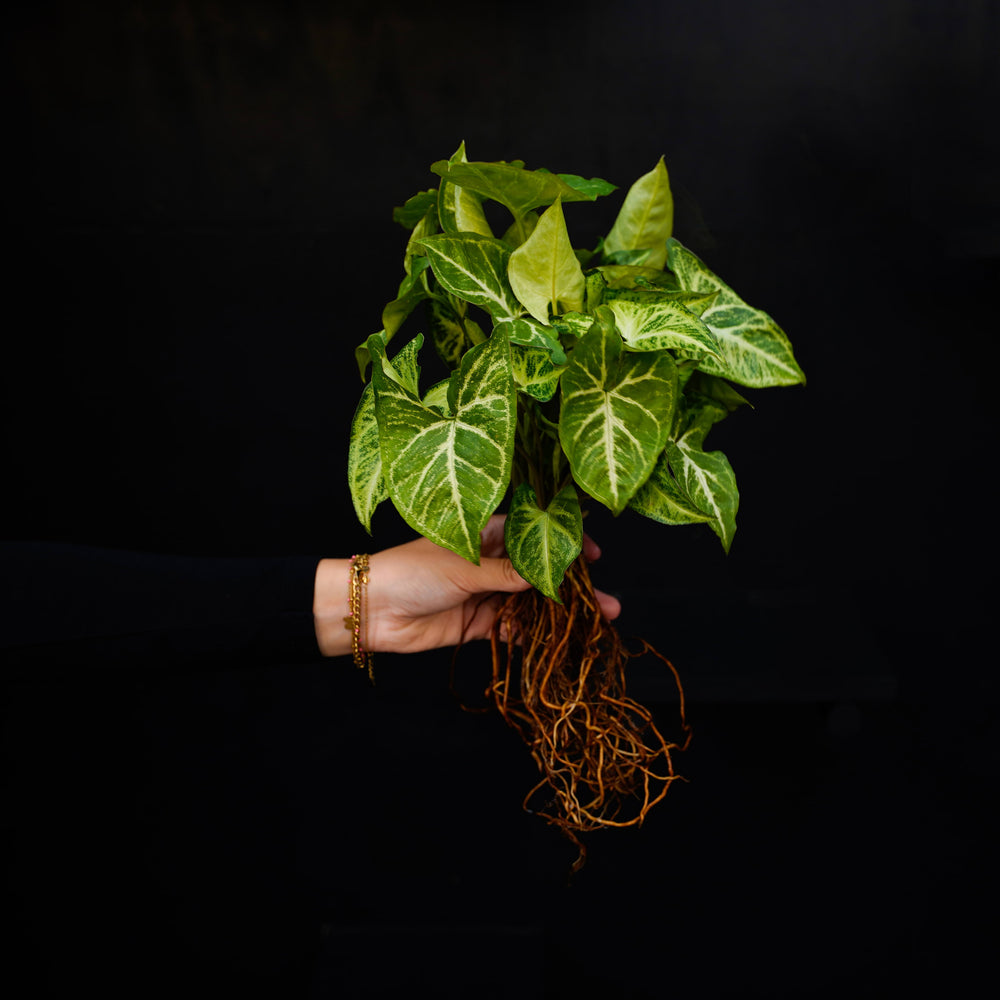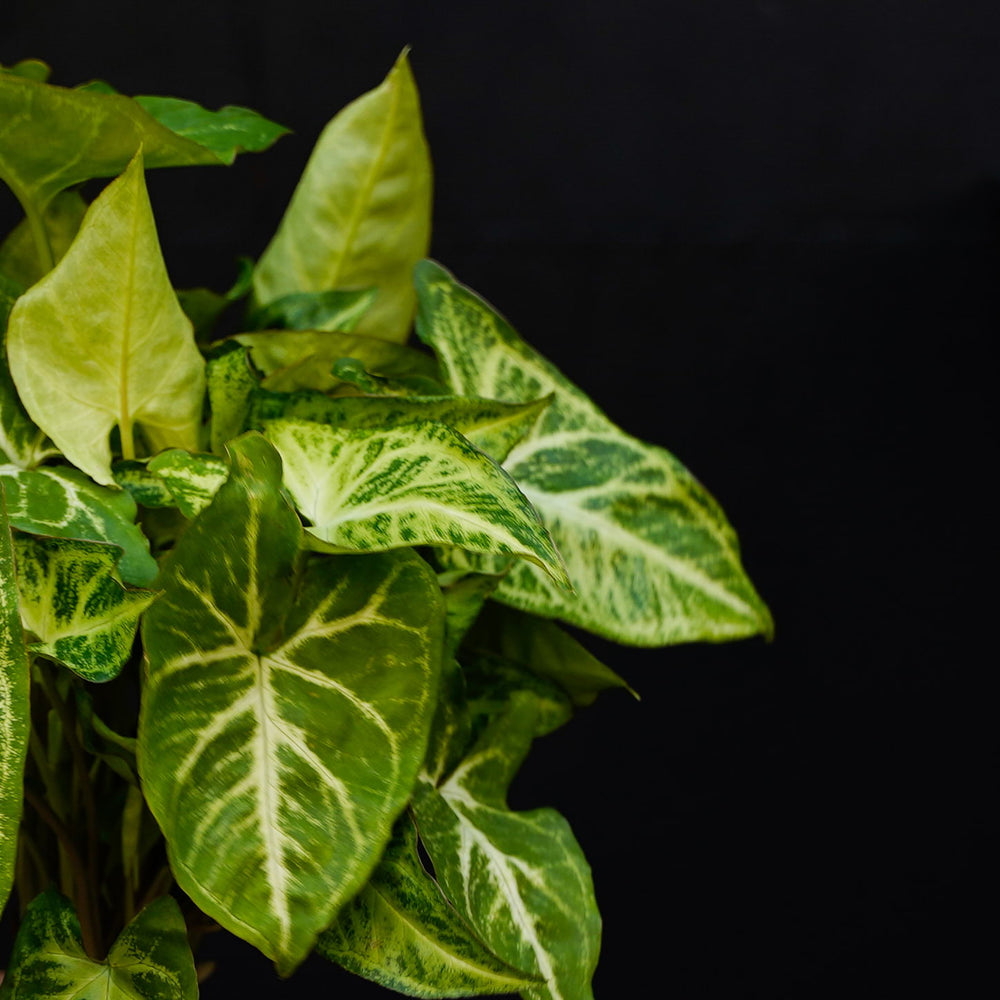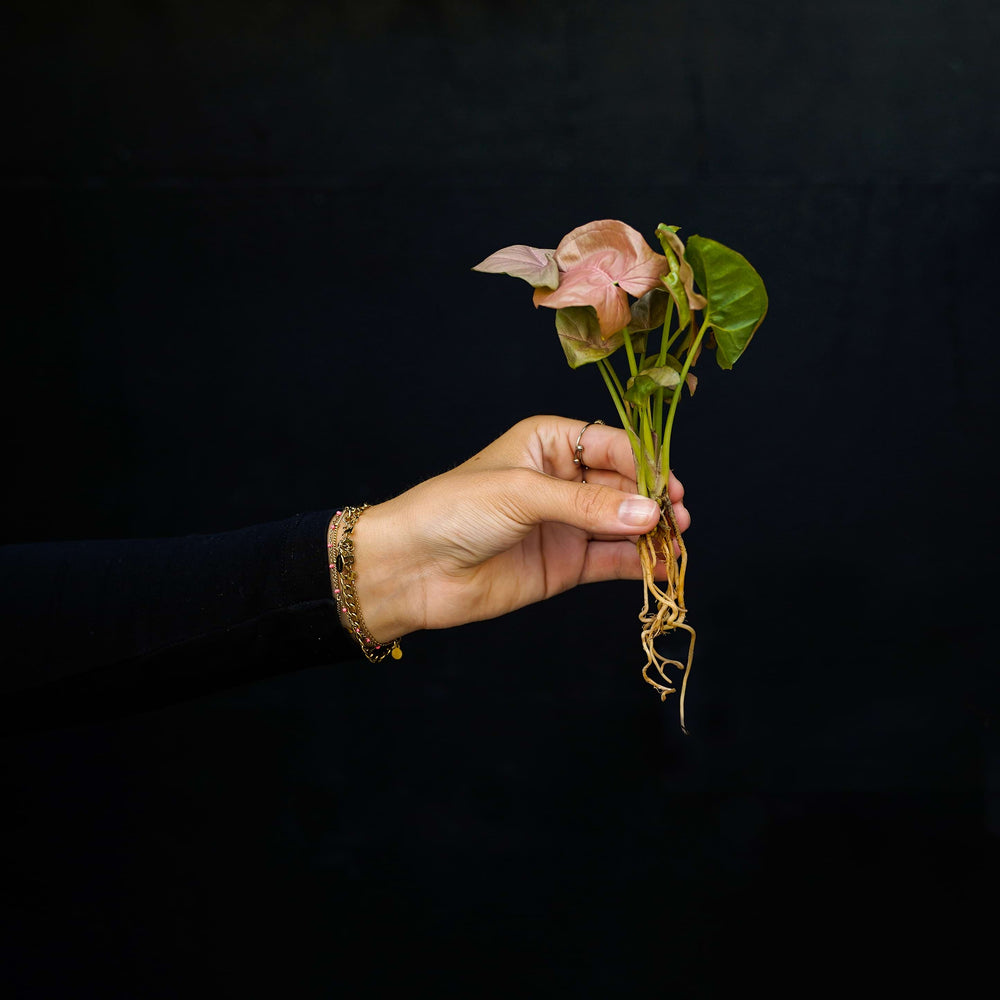Ontdek onze Syngonium planten
Alles wat je wilt weten over de verzorging van je Syngonium plant
De Syngonium is een bijzondere kamerplant die met zijn opvallende bladeren en charmante uitstraling direct de aandacht trekt. Oorspronkelijk afkomstig uit tropische regio’s in Midden- en Zuid-Amerika, is Syngonium geliefd om zijn variërende bladvormen, bladkleuren en -patronen. Van hartvormige bladeren tot gedetailleerde tekeningen, er zijn verschillende soorten Syngonium om uit te kiezen, elk met zijn eigen unieke schoonheid en karakter.
Het kiezen van de juiste plek voor je Syngonium is cruciaal voor zijn welzijn. Deze prachtige kamerplant gedijt het beste op een locatie met helder, indirect licht. Sterk direct zonlicht kan de bladeren verbranden en leiden tot verkleuring.
Kies daarom voor een plek in de buurt van een raam op het noorden, oosten of westen, zodat je Syngonium kan genieten van het zachte, gefilterde licht. Een kamertemperatuur tussen de 18°C en 24°C is ideaal, maar zorg ervoor dat de plant beschermd is tegen koude tocht, aangezien dat de groei kan belemmeren.
Een goede watergift is essentieel om je Syngonium gezond te houden. Hier zijn enkele belangrijke punten om in gedachten te houden:
Houd de grond licht vochtig, maar vermijd dat de wortels in drassige omstandigheden verkeren. Overmatig water geven kan wortelrot veroorzaken, terwijl te weinig water leidt tot droge en slappe bladeren. Zoek naar de juiste balans, meestal komt dit neer op één keer per week water geven.
Om te weten wanneer je Syngonium water nodig heeft, steek je je vinger ongeveer 2-3 centimeter diep in de grond. Als de grond op die diepte droog aanvoelt, is het tijd om water te geven. Wacht nog even als de grond vochtig aanvoelt.
Zorg ervoor dat de pot waarin je Syngonium groeit drainagegaten heeft. Dit voorkomt dat overtollig water zich ophoopt en de wortels verstikt. Plaats een schotel onder de pot om het overtollige water op te vangen en giet het weg nadat de plant voldoende tijd heeft gehad om het op te nemen.
Een Syngonium kan onder de juiste omstandigheden snel groeien. Omdat het klimaat in huis of op kantoor droger is dan de originele omstandigheden in de tropen zal hij niet extreem hard groeien.
Regelmatig verpotten van je Syngonium is aan te raden. De plant heeft dan verse grond en zal goed doorgroeien. Dit hoeft niet jaarlijks, maar om het jaar is prima. Hier zijn enkele richtlijnen voor een succesvolle verpotting:
Selecteer een pot die slechts 2-4 cm groter is dan de huidige pot van je Syngonium. Te grote potten kunnen leiden tot overmatig vocht vasthouden, terwijl te kleine potten de groei kunnen belemmeren.
De lente is het ideale moment om je Syngonium te verpotten, omdat de plant in deze periode het meest actief is. Vermijd verpotten tijdens de wintermaanden, omdat de groei dan vertraagt.
Wees voorzichtig bij het verpotten om de wortels niet te beschadigen. Plaats de plant in de nieuwe pot en vul de ruimte op met verse potgrond. Druk de grond voorzichtig aan en geef daarna water.
Slappe bladeren van je Syngonium kan wijzen op overbewatering. Laat de grond goed drogen tussen de gietbeurten.
Gele bladeren kunnen duiden op overbewatering of te veel direct zonlicht.
Bruine bladranden kunnen ontstaan door te veel zonlicht. Pas de watergift en blootstelling aan licht aan om deze problemen te verhelpen.
Deze kunnen worden veroorzaakt door direct zonlicht, een lage luchtvochtigheid of overbewatering. Pas de omstandigheden aan om het probleem op te lossen.
Syngonium heeft regelmatig voeding nodig om gezond te blijven en goed te groeien. Hier zijn enkele tips voor het voeden van je Syngonium:
Tijdens het groeiseizoen, meestal in het voorjaar en de zomer, kun je je Syngonium bemesten. Stop echter met bemesten tijdens de wintermaanden, wanneer de groei vertraagt.
Verdun de meststof altijd met water voordat je deze aan je plant geeft. Overmatige bemesting kan schade veroorzaken aan de wortels van je Syngonium.
Wil je je Syngonium Collectie uitbreiden? Stekken is een geweldige manier om nieuwe planten te krijgen. Snijd een gezonde stengel net onder een knoop af en plaats deze in water of potgrond. Zorg voor voldoende warmte en vochtigheid om het wortelen te bevorderen.
Snoeien is belangrijk bij je Syngonium naar mate de plant ouder wordt. Knip de lange stelen of takken terug tot net boven een knoop of blad.
Syngoniums kunnen profiteren van ondersteuning om omhoog te groeien. Een mosstok of een trellis kan helpen om de plant te begeleiden terwijl hij groeit.
Verwijder regelmatig dode of vergeelde bladeren om de gezondheid van je Syngonium te bevorderen. Knip de bladeren voorzichtig af bij de basis met een scherpe schaar.
Syngonium Neon: Een opvallende variant met neon-roze gekleurde bladeren die aan de onderkant groen van kleur zijn. Een bijzondere kleur schakering!
Syngonium Pixie: De pixie is een klimplant met vrolijk gekleurde bladeren. Deze bladeren zullen na verloop van tijd van vorm veranderen.
Syngonium Arrow: De Arrow valt op door zijn grote bladeren, unieke bladtekening en eigentijdse uitstraling.
Syngonium op water: Een Syngonium plant groeit goed in de aarde maar ook erg goed op water. Ontdek de Hydroponie Syngonium.
Syngonium erythrophyllum: Deze heeft donkerrode tot paarse bladeren die een prachtige aanvulling zijn op je collectie kamerplanten.
